Notes: Leaton was located on the Shrewsbury & Chester Railway (S&CR) which opened throughout on 14 October 1848. The S&CR was formed in July 1846 by a merger of the North Wales Mineral Railway (NWMR) and the Shrewsbury, Oswestry & Chester Junction Railway (SO&CJR). The NWMR had started the construction of a line between Saltney Junction (near Chester) and Ruabon via Wrexham in 1844. The SO&CJR was set up to create a route between Shrewsbury and Chester and the merger enabled that task to be carried out through an extension of the NWMR line. The first section of the line opened between Saltney Junction and a temporary railhead at Rhosymedre on 4 November 1846.
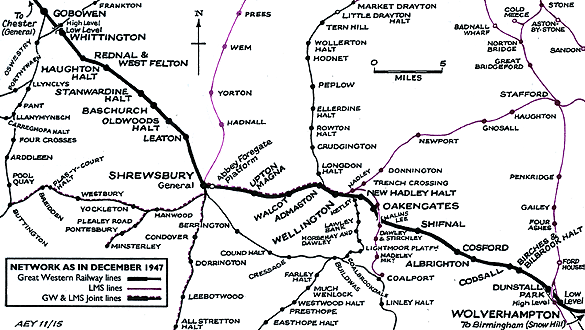 |
The station opened when the line was completed on 14 October 1848. It was located on the north side of the Leaton and Bromere Heath road which crossed the line via a level crossing.
The station building was on the up side (Shrewsbury direction) of the double-track line adjacent to the level crossing. Like other stations on the line it was the work of Chester architect, T M Penson, and was in a Tudor cottage ornée style. Built of brick, the two-storey building presented gables to the south-western (platform) and north-eastern elevations, each of the prominently overhanging roofs given a heavy, elaborately incised bargeboard with finial and pendant. On the ground floor, facing the track was a canted bay whose window had elaborate lozenge-shaped tracery. A single-storey wing projected north-westwards, its tall pitched roof rising almost to the height of the two-storey building; the wing also rejoiced in an elaborate bargeboard on its north-west-facing gable and the delightful style of glazing used on the bay was repeated. At the time of opening there would have been only simple very low level platforms; with the addition of a high platform, whilst the bay window abutted the ramp of this platform, the windows of the single-storey wing ended up with their cills only a few inches above the level of the platform, thereby losing something of their dignity.
.gif) At the time of opening Leaton had no goods facilities. At the time of opening Leaton had no goods facilities.
Leaton was served by trains between Shrewsbury and Chester. The March 1850 timetable showed five up and four down trains on Monday-to-Saturday. There were two trains in each direction on Sunday.
On 1 September 1854 the S&CR was taken over by the Great Western Railway (GWR). To read more about the S&C and the GWR take over click here.
Under the GWR the line through Leaton became a busy trunk railway that carried express and local passenger trains and large volumes of freight. A Birmingham – Birkenhead express service was introduced on 1 May 1857 and a London Paddington – Birkenhead service on 1 October 1861. These were prestigious trains that called only at principal stations.
By 1881 a signal box had been opened on the south side of the level crossing east of the line.
The December 1895 timetable showed four up and five down trains on Monday-to-Friday. The first up train of the day at 9.50am ran to Wolverhampton Low Level but the other three travelled only to Shrewsbury. On Saturday there was an extra up train which ran to Shrewsbury. The down trains all ran to Chester. On the first Wednesday of the month there was an extra down train which ran to Gobowen. On Sunday there were two trains in each direction. One of the up trains ran to London Paddington and the other to Solihull. The down trains ran to Chester.
By 1900 a new building had been provided on the up platform of a readily identifiable GWR design. It was a single-storey affair with a hipped roof and segmental-arched openings. A smart little awning extended part-way along it and its roof continuing the slope of the roof of the building. On each side was a serrated valance whose profile curved upwards from the walls. At some stage a waiting shed, possibly of timber, was constructed on the down platform. Its roof sloped away from the railway and on north-western side (possibly on the south-western too) was an unusual group of three ‘Gothic’ arched windows, two small ones flanking a larger one.
In 1903 13,393 passenger tickets were sold at Leaton and 3,354 parcels were handled.
.gif) In 1905 the signal box was replaced with a GWR structure that had a brick base and a wooden upper cabin. The box was equipped with a 21-lever frame. In 1905 the signal box was replaced with a GWR structure that had a brick base and a wooden upper cabin. The box was equipped with a 21-lever frame.
In 1909 Leaton was provided with goods facilities. Located south of the level crossing, west side of the line, they included sidings and a goods shed.
The year 1913 saw 12,419 passenger tickets sold and 8,708 parcels handled. It forwarded 72 tons of general goods and received 2,978. Coal and Coke handled amounted to 683 tons and 25 wagons of livestock passed through the station.
By July 1922 Leaton had five trains in each direction on Monday-to-Saturday. There were two in each direction on Sunday.
In 1933 5,366 passenger tickets were sold, a substantial decline from the 1913 figure and probably the result of bus competition.
On 1 January 1948 Leaton became part of the British Railways [Western Region] (BR[WR]). The BR timetable for the summer of 1949 showed five trains in each direction as seen in the table below. On Sunday there were two services in each direction.
Up Trains – Summer 1949 |
Destination |
Down Trains – Summer 1949 |
Destination |
8.24am |
Birmingham Snow Hill |
7.48am |
Chester |
9.05am |
Shrewsbury |
10.52am |
Chester |
3.13am |
Shrewsbury |
1.47pm |
Chester |
6.44pm |
Shrewsbury |
4.57pm |
Chester |
7.50pm |
Birmingham Snow Hill |
6.53pm |
Chester |
The 15 September 1958 timetable showed only five up and two down services on Monday-to-Saturday. There was no Sunday service.
On 12 September 1960 BR[WR] withdrew the passenger service from Leaton at the same time as many other stations on this line.
From 1 January 1963 Leaton came under the operational control of British Railways [London Midland Region] (BR[LMR]) and was transferred fully to this region on 1 July 1963. BR[LMR] closed the station to goods services on 15 March 1965.
Leaton signal box was closed on 12 November 1987.
The platforms at Leaton had been demolished by the 1970s but the original building dating from 1848 survived as a private residence and was later converted into bed and breakfast accommodation. It has been greatly extended, as seen on accompanying photographs, with additions to all four sides. Sensitivity to the design of the original building has been shown in the choice of brick and in the provision of small gables with bargeboards imitating the Victorian ones, though lacking the finials and pendants. However the uncompromisingly modern design of the windows spoils the otherwise attractive appearance.
The later GWR up platform building also survived and was extant when visited in November 2015.
Click here to see photos of Leaton signal box
Tickets from Michael Stewart and route map by Alan Young
Sources:
- A Regional History of the Railways of Great Britain - Volume II North & Mid Wales - Peter E Baughan - David & Charles 1980.
- Encyclopaedia of British Railway Companies - Christopher Awdry - Guild Publishing 1990.
- Paddington to the Mersey - Dr R. Preston Hendry & R. Powell Hendry - Oxford Publishing Company 1992.
- Railway Passenger Stations in Great Britain - A Chronology - Michael Quick - Railway & Canal Historical Society 2009.
To see the
other stations on the Shrewsbury - Chester General line
click on the station name: Shrewsbury S&C, Oldwoods Halt, Baschurch, Stanwardine Halt, Haughton Halt, Rednal & West Felton, Whittington Low Level, Weston Rhyn, Trehowell Halt, Llangollen Road, Whitehurst Halt, Rhosymedre, Cefn, Rhosymedre Halt, Wynnville Halt, Johnstown & Hafod, Rhos, Rhosrobin
Halt, Gresford, Rossett, Pulford, Balderton and Saltney |

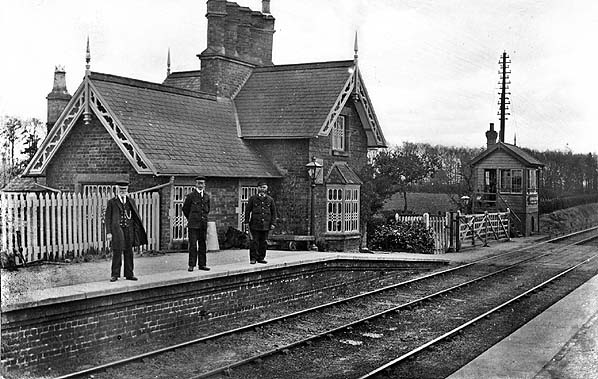
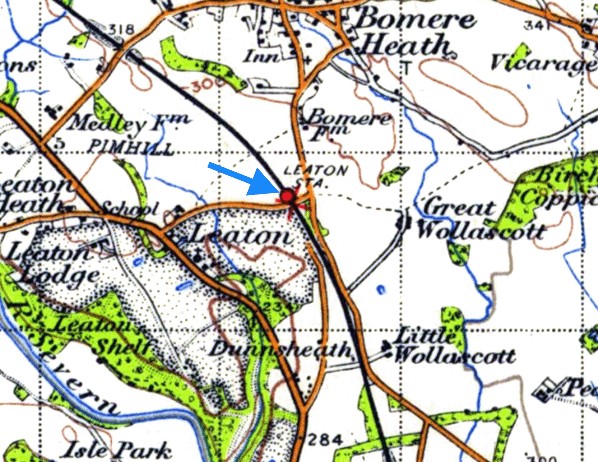
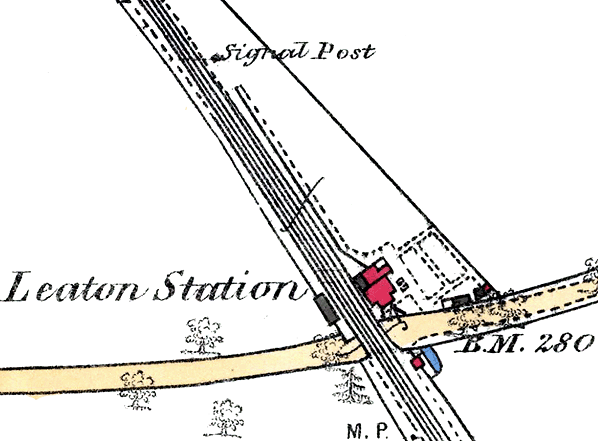
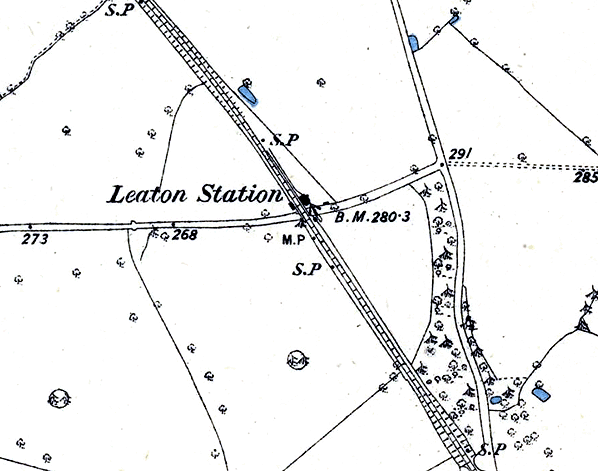
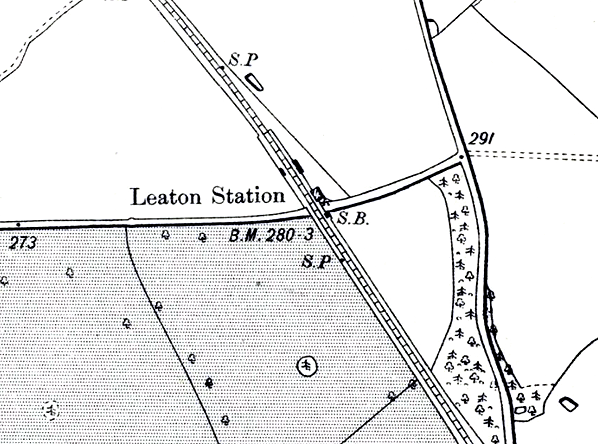
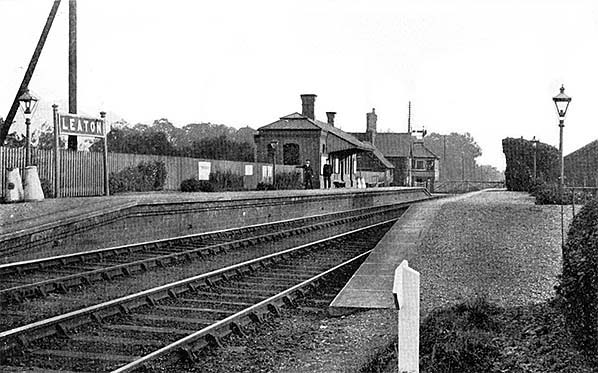
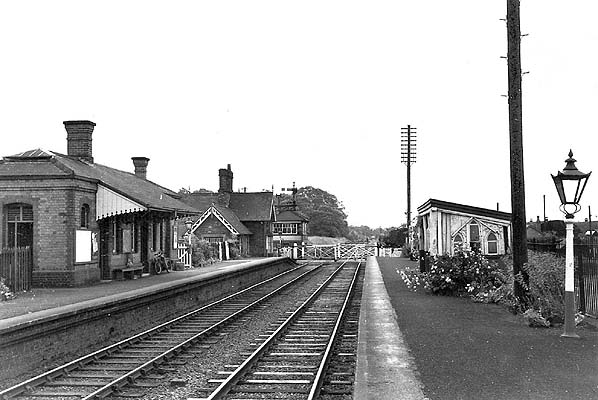
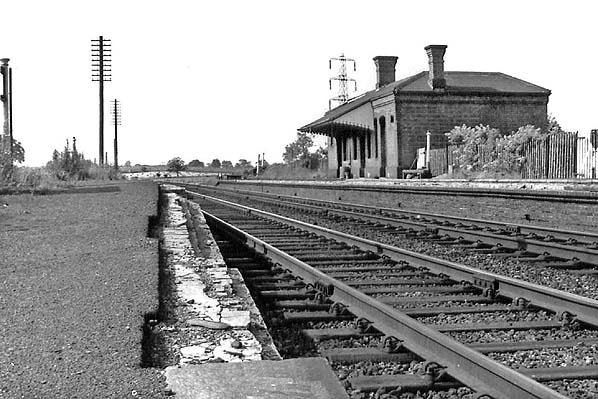
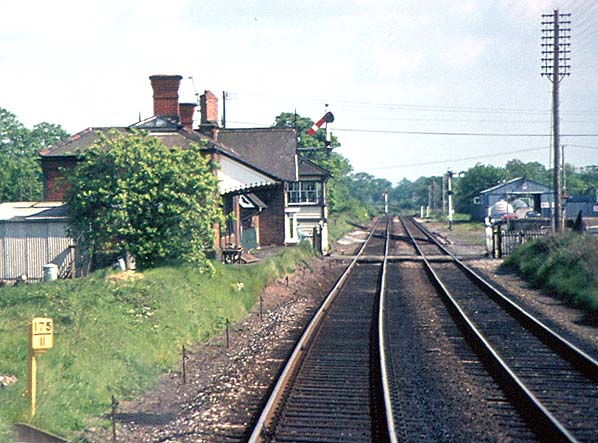
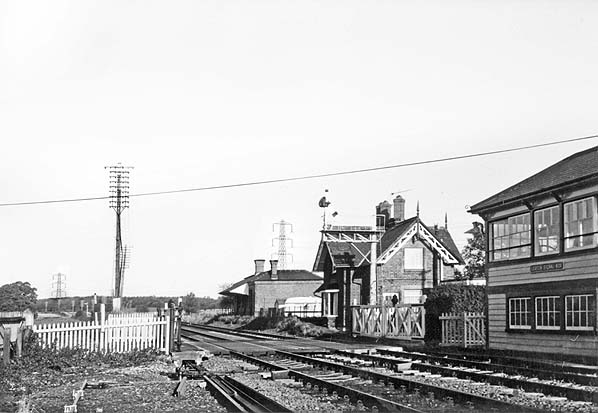
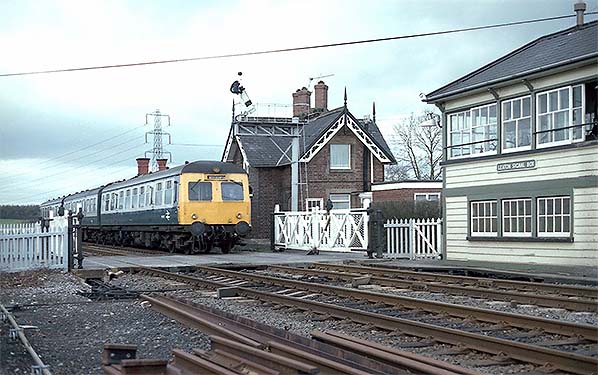
.jpg)

.gif) At the time of opening Leaton had no goods facilities.
At the time of opening Leaton had no goods facilities. .gif) In 1905 the signal box was replaced with a GWR structure that had a brick base and a wooden upper cabin. The box was equipped with a 21-lever frame.
In 1905 the signal box was replaced with a GWR structure that had a brick base and a wooden upper cabin. The box was equipped with a 21-lever frame. 
 Home Page
Home Page